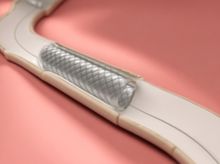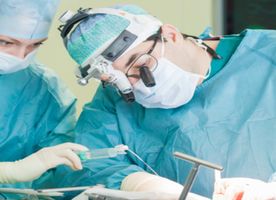Angioplasty in Iran
Search and Compare the Best Clinics and Doctors at the Lowest Prices for Angioplasty in Iran






Angioplasty at Ceritamed in Tehran, Iran
No Time?
Tell us what you're looking for and we'll reach out to the top clinics all at once
WHY US?

No Time?
Tell us what you're looking for and we'll reach out to the top clinics all at once
What does a Angioplasty Procedure Involve?
The technique of the angioplasty is the same for every vessel and venous angioplasty is not that common. The point of insertion of catheter differs for each vessel but the rest of the procedure is almost the same. We will now explain the procedure for coronary artery angioplasty.
The procedure begins with angiography and the cardiologist will do an angiography to find out the exact site of the blockage. After this, you are sedated. General anesthesia is not given as it is a minimally invasive procedure. No large incision is needed for the angioplasty of any blood vessel. The area is cleaned with an antiseptic swab to avoid future problems and a small incision is made on the skin at the area where the femoral artery is present. The catheter with an attached wire is inserted into the artery and from the femoral artery, it travels into your body to reach the coronary artery. Once the catheter reaches there, a dye is introduced to get a clear angiograph of the blockage site. IV medicines and fluids are introduced into your body. Blood-thinning medicines are given to avoid clot formation and electrode pads are placed on your chest to monitor heart activity.
When the catheter reaches the site of the blockage you will get an uncomfortable feeling. The balloon attached to it is inflated there to increase the diameter of the blocked artery. The balloon is inflated and deflated several times to put pressure on the muscular wall of the vessel. When the plaque is removed, the catheter is pulled out of your body and the small incision is stitched and a bandage is applied over it.
How Long Should I Stay in Iran for a Angioplasty Procedure?
An Angioplasty procedure takes a different length of time for every artery. It depends upon a number of factors such as the size of the vessel, its type, etc. either it is an artery or a vein, number of blockage sites if it is performed under emergency condition, etc. It can take several hours. Once the procedure is completed, you are shifted to the recovery room.
In the case of coronary angioplasty, if it is performed under non-emergency conditions, you can be discharged in a day. A longer stay is needed if you are an emergency such as a heart attack patient. During your stay at the hospital, your heart is continuously monitored. After you are discharged, you will have to stay in the Iran for at least 14 days, during this time you will have several follow up appointments with the doctor to ensure that nothing has gone wrong.
What's the Recovery Time for Angioplasty Procedures in Iran?
The healing period post a Angioplasty tends to vary among individuals, thoroughly influenced by their personal health conditions and the complexity of the procedure carried out. Additionally, recovery time also relies on the specific type of blood vessel treated and its purpose within the body. For instance, in the case of a coronary angioplasty, a mere week suffices for recovery allowing the resuming of regular activities. Conversely, if the angioplasty is performed post a heart attack, the healing phase could stretch out further. Generally, some level of discomfort, weariness, or visible inflammation around the incision spot may be anticipated for several days.
The total recuperation phase, accounting for the healing of the incision site and reaching the optimal performance of the treated vessel, can span across several weeks. It becomes essential to stringently follow all directives given post the procedure, which includes administration of prescribed medicines, frequent medical examinations, disciplined physical activities, and dietary restrictions, to ensure the recovery process progresses without hiccups.
What sort of Aftercare is Required for Angioplasty Procedures in Iran?
The following are some pointers for you to help yourself at home after an Angioplasty:
- Drink plenty of water and other fluids to remove the dyes from your body.
- Do not smoke and drink as tobacco and alcohol pose a lot of risks to your health.
- Follow a healthy lifestyle and ensure you exercise and walk daily.
- Eat healthily and avoid a diet that is rich in cholesterol because it deposits in blood vessels to form plaques.
- Do not indulge yourself in strenuous activities such as the gym, swimming, running, etc.
- Take care of the site where the catheter was given and consult with your doctor if you notice any swelling or bleeding.
What's the Success Rate of Angioplasty Procedures in Iran?
The effectiveness of Angioplasty in Iran is typically considerable, with notable improvement in symptoms and enhanced life quality for patients. Angioplasty procedure has had a tremendous success rate in previous years. Coronary stenosis, the success rate is 90% if it is performed to treat angina. In cases of both angina and heart attack under emergency conditions, the success rate is good at 64%.
Are there Alternatives to Angioplasty Procedures in Iran?
The following are the alternatives to an angioplasty:
- Medication: Blood-thinning medicines are given to keep your blood thin. So that it may not form a clot, blocking the artery. Also, medicines are given to dissolve the plaques and if it does not work, angioplasty is advised.
- Stents: It is a small medical device that is placed in the narrowed vessel to increase its size. Unlike balloon angioplasty, it keeps the vessel open facilitating the blood flow and coronary stents are most common.
This information has been accurately sourced and verified by a medical professional for its accuracy, however, we strongly recommend you to consult with your doctor before pursuing medical procedures overseas.


